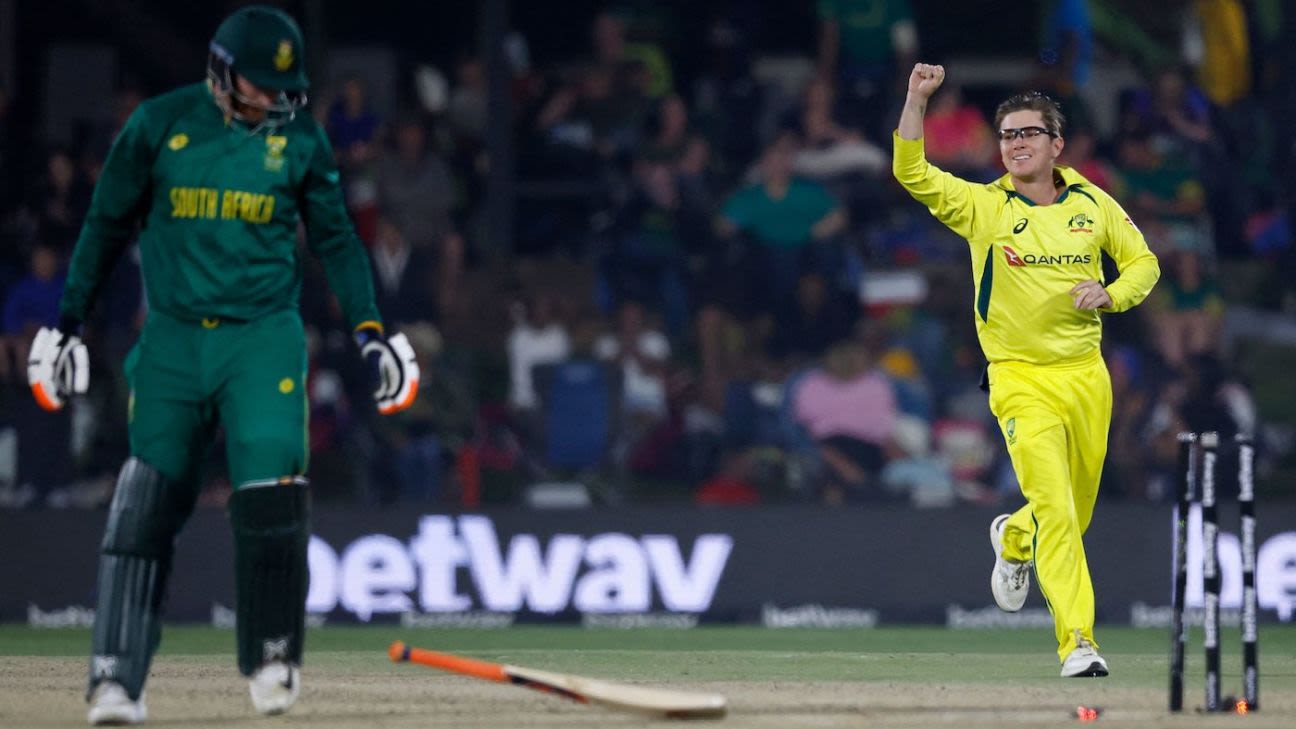At what point should a team that has lost five successive fixtures across white-ball formats start to panic? Or, if that sounds too extreme, when should that team, with the knowledge that a World Cup is less than a month away, begin to show some signs of concern?
South Africa’s No. 5 put the team’s poor form (they lost the T20Is 3-0 and are currently 2-0 down in the ODIs against Australia) down to the simple – but not small – matter of not doing the foundational stuff well.
“They [Australia] are doing the basics very well and we are quite far off on our basics,” Klaasen said in Potchefstroom ahead of the third ODI. “And the intensity they are playing at at this moment is far, far higher than ours. We need to raise our intensity a little bit.”
He called it “a good challenge” for South Africa that they need to win the next three games to take the series, and even better that the gauntlet has been laid down in Potchefstroom, a venue Klaasen claims opposition teams “don’t particularly enjoy”.
Marnus Labuschagne, who grew up 40 kilometres away from Potchefstroom in Klerksdorp and whose friends and family are expected to arrive in numbers, may disagree. But for Klaasen, the absence of distraction and South Africa’s strong record give them the upper hand.
“We all stay in the [student] village. It’s nice and quiet here. We don’t give them the glamorous life that you get elsewhere in South Africa, so speaking to the guys, teams don’t particularly enjoy it,” Klaasen said. “But we love this venue.”
South Africa have won seven of the eight ODIs they have played in Potchefstroom, including a six-wicket win when they blanked Australia 3-0 in 2020. Then, it looked like the team had turned a corner after a period of mostly administrative upheaval. Now, they will hope to do the same with only three competitive fixtures before the World Cup and, as Klaasen put it, at least a 20% improvement the need of the hour. “We’re performing at 60%, if we’re honest, perhaps even lower. If we can get that around 80% to 95% – I don’t think anyone gets it to 100% – we’ll be in a good position.”
They will have to do that with three big questions to answer, starting with who is able to take the field.
Nortje’s fitness under the scanner
It was in 2021-22 that Nortje was out of action for seven months with hip and back injuries that took longer than expected to heal. He is one of six quicks in the World Cup squad – South Africa are relying on their traditional strength – and, after missing the 2019 World Cup with a fractured thumb, Nortje will not want history to repeat itself.
… balance of the squad
While Klaasen thinks “if we nail our basics, then our balance is perfect”, he need only look at some of the other squads to wonder if his statement should be taken with a pinch of salt. England have six allrounders, including two spin-bowling allrounders, New Zealand and Netherlands have five each, and India three. South Africa may consider Aiden Markram a second allrounder, and Magala, Kagiso Rabada and Keshav Maharaj almost-allrounders, but even then they all need to step up to avoid the XI lacking something.
That said, a fairly similar squad beat England earlier this year to give South Africa much-needed World Cup Super League points so it may just be a case of…
… shaking off the rust
South Africa were out of action for five months before Australia arrived, and though many of their players were active in T20 leagues over the southern-hemisphere winter, they may still be finding their feet as a group. Again, Klaasen didn’t agree but urged some patience with the playing group, which will look to get things right over the next six days.
“We are professional cricketers and the majority of the guys have been playing around the world. We are just off our game at this moment,” he said. “It’s just a matter of time. Maybe we are trying a little bit too hard. We are getting there. Hopefully we’ll get it right tomorrow.”
Firdose Moonda is ESPNcricinfo’s correspondent for South Africa and women’s cricket







